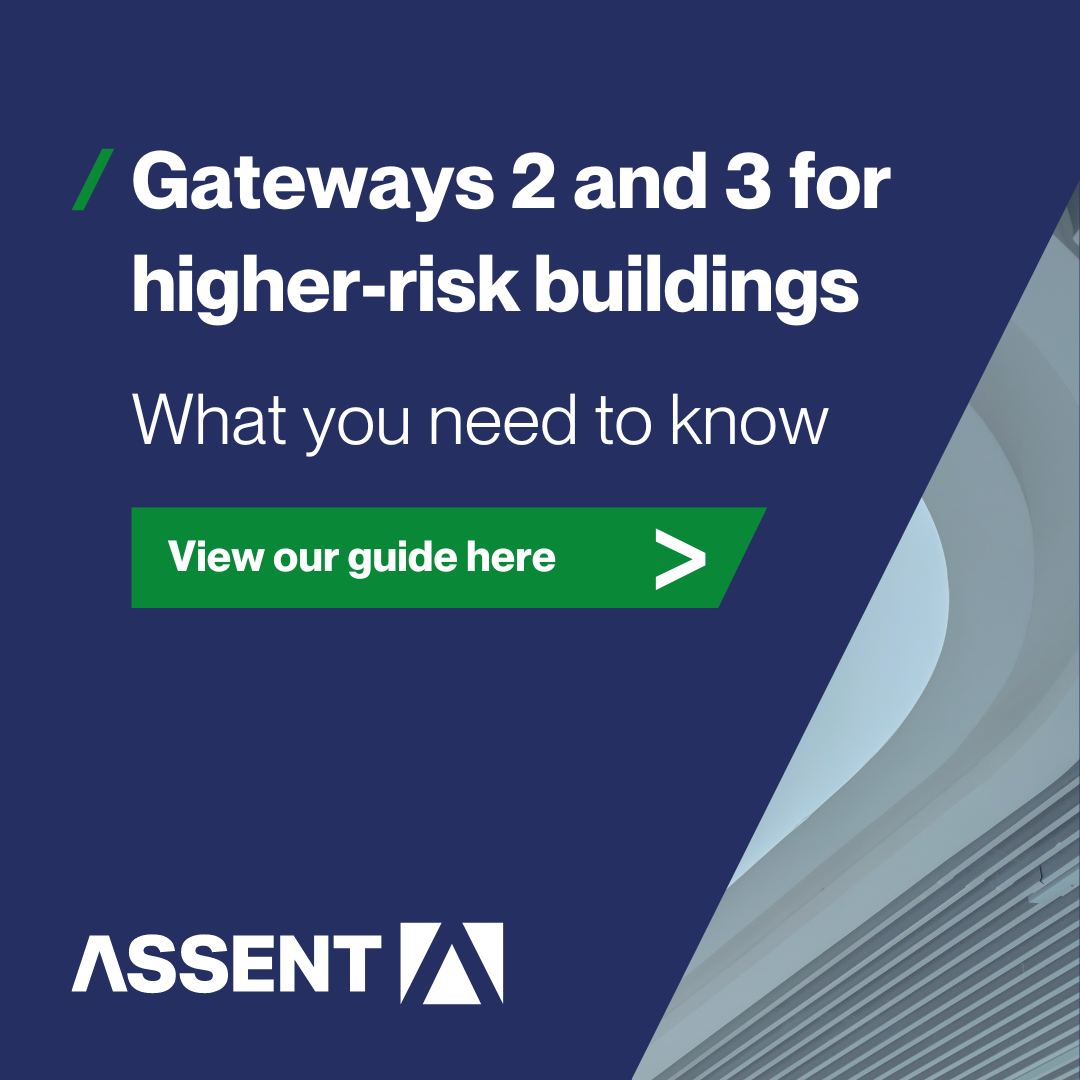
All higher-risk buildings (HRBs) must now pass through three gateway points at the planning, building control, and completion stages as part of the amended building regulations introduced on 1st October 2023.
Two new Gateways must now be followed in addition to the existing Gateway One, which was established as part of the changes to the planning system in August 2021.
Introduced on 1st August 2021, Planning Gateway One (PGO) ensures fire safety is a key part of the design proposals of all higher-risk buildings. The Health and Safety Executive (HSE), as a statutory consultee for planning applications for higher-risk buildings, must advise on fire safety matters as they relate to land use before planning permission can be granted.
Gateway Two must be in place before building work starts. This process replaces the building control deposit of plans stage.
This phase involves a rigorous examination of building regulations at every stage of the design and construction process. It will act as a ‘hold’ point; construction cannot begin until approval is obtained from the Building Safety Regulator (BSR). This application must be as detailed and high-quality as possible, outlining how building control requirements will be met. The better the application, the quicker the BSR will be able to consider it.
Your application will need to:
A multi-disciplinary team (MDT) will be assigned to each submission and will include a Registered Building Inspector.
There will be a staged approach to work. Applicants must submit further documents and seek approval before progressing to subsequent stages of work. The BSR will be able to take enforcement actions if work takes place prior to approval.
Building regulations should be considered holistically with an outcome-focused approach, including appropriate consideration of building safety. Dutyholders should not consider compliance with building regulations as a tick-box exercise.
All plans and documents must be realistic for the building and not rely on unreasonable assumptions about the occupied building once built. This includes management, maintenance and behaviours, and characteristics of residents or other users.
Gateway Three occurs once building work is complete, at the current completion/final certificate stage. This acts as another ‘hold point’ – you cannot register or start occupying a higher-risk building until building control approval is obtained from the BSR. Planning for this stage begins early in the building control process as you need to demonstrate how building work complies with the regulation and evidence that the buildings are safe for occupation. This new approach will ensure building safety is considered throughout all stages of design and construction rather than at the end. It will be an offence to occupy a new higher-risk building that has not been registered.
Gateway Three requires an application that includes plans and documents that reflect the ‘as built’ building (this forms part of the ‘golden thread’ of information). The building owner will also need to receive this information to help them handle safety risks once the building is in use. Completion certificates will be issued if a Gateway Three application is approved.
Between Gateways Two and Three, there are a number of requirements that must be met. These include:
The golden thread of information is the new term for the information required for the building control approval, change control process and completion certificate application.
It will comprise the evidence to support your case that all safety requirements have been considered and met. The evidence that supports Gateway Three is collected during construction as part of the golden thread of information. In practice, this will mean reviewing the information that is ‘golden’ and ensuring all content is relevant and appropriate.
If you have any questions regarding your project please get in touch.
1 ‘Higher-risk buildings’ are defined by The Building Safety Act 2022, The Building Act 1984 and The Higher-Risk Buildings (Descriptions and Supplementary Provisions) Regulations 2023.
Receive the latest industry news and resources straight to your inbox
*By submitting your email you consent to receiving future updates and communications from Assent
© Assent Building Compliance 2024